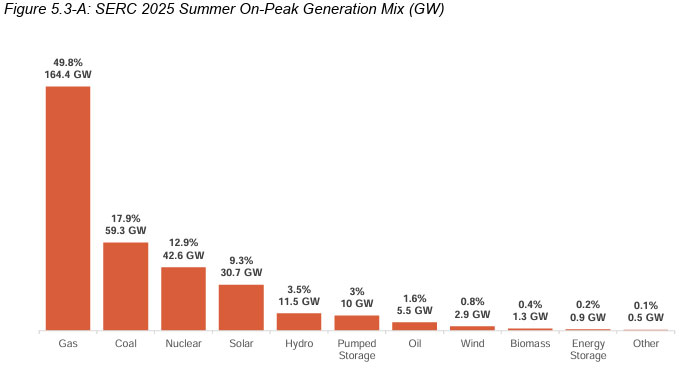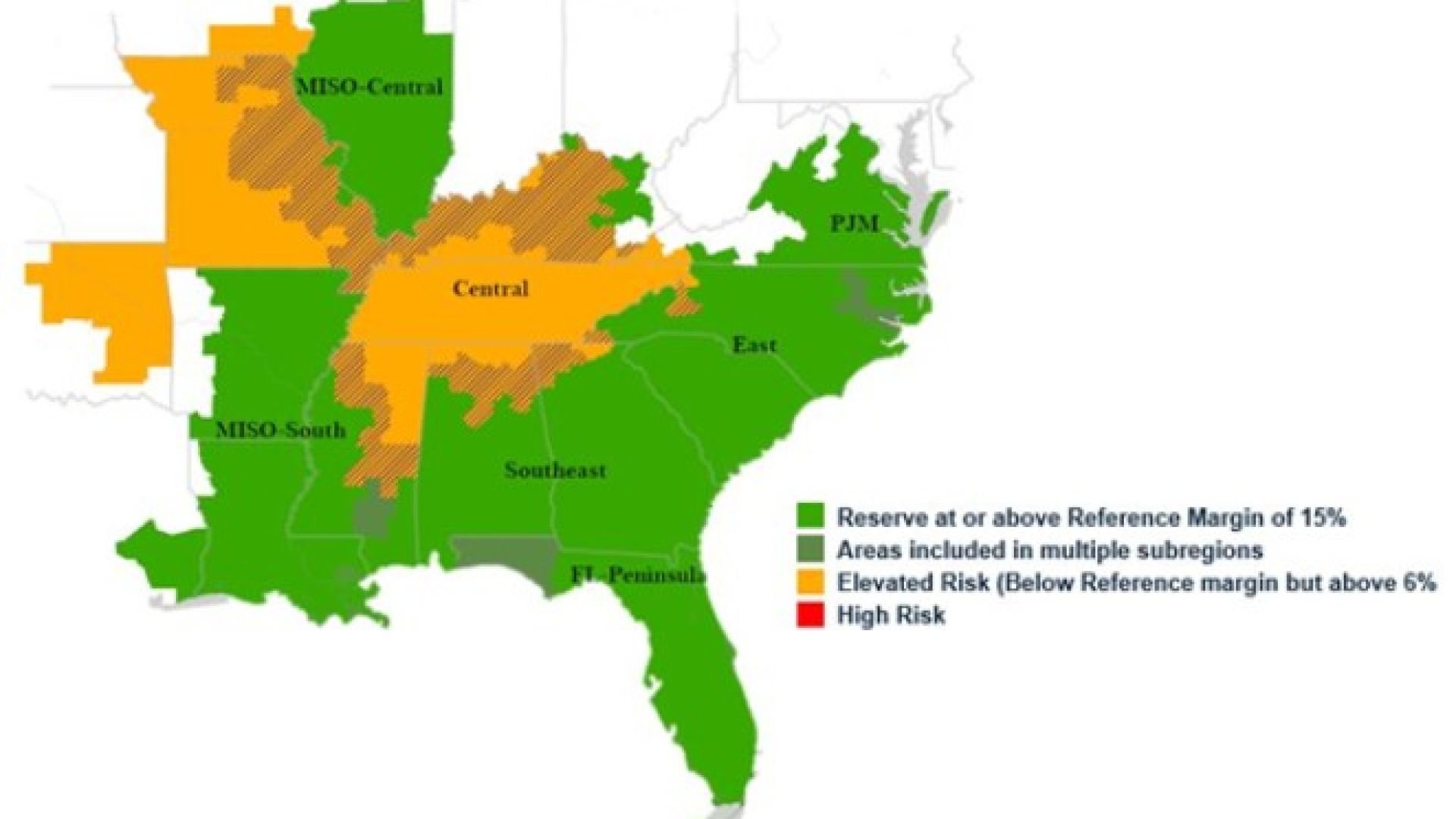The 2025 SERC Summer Reliability Assessment offers encouraging news for utility-scale renewable energy developers across the Southeast. With solar capacity increasing sharply and reserve margins holding strong across much of the region, the report confirms that renewables are playing a central role in grid reliability heading into another hot summer.

What is SERC?
As highlighted in the report, the SERC Reliability Corporation (SERC) plays a critical role in evaluating and ensuring the reliability of the bulk power system across much of the Southeast and Central US. As one of six Regional Entities under the North American Electric Reliability Corporation (NERC), SERC is tasked with assessing generation and transmission adequacy, identifying potential reliability risks, and supporting coordinated planning among utilities and system operators. Covering parts of 16 states and serving over 97 million people, SERC’s independent assessments are foundational to reliability planning across the region—and this summer’s report reflects the growing contribution of renewable resources in that effort.
30 GW of On-Peak Solar and Counting
SERC projects 30 GW of on-peak solar generation will be available across its footprint this summer—a 7 GW increase over last year’s capacity. That’s more than a 30% year-over-year growth rate and reflects steady investment and deployment across multiple SERC subregions. In states like Georgia, Alabama, and Mississippi, where solar was historically underrepresented, this rapid scale-up is helping diversify generation portfolios and reduce peak demand stress on the grid.
The SERC East subregion (covering North and South Carolina) alone added 2.7 GW of solar since last summer. With a generation mix now comprising over 9% solar, this growth helped boost the subregion’s reserve margin from 27% to 29%—well above the 15% reliability reference margin. That’s a strong example of how renewables can contribute meaningfully to reliability metrics, even in vertically integrated markets.
“Lack of Fuel Diversity,” Natural Gas Concerns
While the 2025 SERC Summer Reliability Assessment affirms that most subregions have sufficient reserves under normal conditions, the report also underscores the growing reliability risks associated with over-dependence on natural gas. As the report notes, “Nearly 50% of the generation in SERC’s footprint relies on natural gas, and some subregions, such as SERC MISO-South and SERC FL-Peninsula, have even higher percentages (68% and 75%, respectively).” This high reliance exposes portions of the region to vulnerabilities such as fuel supply disruptions during hurricanes, pipeline constraints, and limitations on redispatch flexibility during Operational Flow Orders (OFOs). Additionally, utilities may be over-estimating the reliability of natural gas power plants, which artificially elevates the region’s reliability safety margin. These risks highlight the importance of diversifying the resource mix with more firm, non-gas assets—including utility-scale solar, wind, and storage—to strengthen grid resilience during peak conditions and extreme events.

Strong Forecast Accuracy Supports Resiliency
A standout finding in this year’s report is the marked improvement in load forecast accuracy, with this to say: “Last summer’s load forecasting results were excellent!” For summer 2024, nearly all SERC subregions came within 1% of their actual peak load, a sharp improvement from prior years when under-forecasting reached double digits. This trend boosts confidence in utility and regional planning models, which in turn strengthens the case for integrating more variable generation—particularly when paired with accurate solar output forecasting.
The report also highlights the increasing threat posed by extreme weather, particularly hurricanes and prolonged heat waves. The region is entering the summer with above-normal temperature forecasts and the memory of 2024—one of the hottest summers on record and Florida’s hottest ever. SERC notes that the frequency, duration, and intensity of extreme heat events are rising, placing additional stress on generation resources and transmission infrastructure. Hurricane activity is also expected to be above average, with warm ocean temperatures creating conditions for rapid storm intensification. These converging risks make it essential for grid operators and planners to prepare for more frequent and severe weather-driven disruptions.
Renewables Reducing Summer Risk in Most Subregions
All SERC subregions are expected to have adequate capacity to meet summer demand—even under stressed scenarios. However, SERC Central (Tennessee and TVA generally) faces elevated risk under extreme load (90/10) conditions - this region also has the lowest amount of renewable energy on its grid in the south. This outcome is supported in part by new renewable capacity additions that increase available reserves and offset higher temperatures forecasted across the footprint.
So, will your power go out this summer? While the SERC report shows the region has enough generation and transmission capacity under normal conditions, it can’t guarantee uninterrupted service. Outages often result from distribution-level issues beyond the scope of bulk system planning—like extreme storms, aging infrastructure, or even squirrels. In some areas, such as recent cases in Louisiana, highly localized issues known as “load pockets” have also caused outages despite plenty of available generation. In short, system-wide reliability is strong, but local conditions still matter.
SREA’s Takeaway
The 2025 summer outlook confirms that solar is not just scaling—it’s stabilizing the grid. With 30 GW of on-peak solar contributing to high reserve margins, the reliability value of utility-scale renewables is clearer than ever. In an environment where policymakers and regulators are focused on reliability, fuel diversity, and affordability, these findings equip stakeholders with strong, data-driven reasons to support continued renewable development.
SREA remains committed to advancing utility-scale renewable energy across the Southeast and will continue to engage with state and regional planners to ensure renewables are fully valued in reliability and transmission planning.


